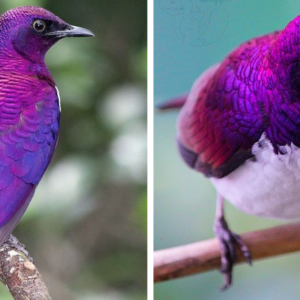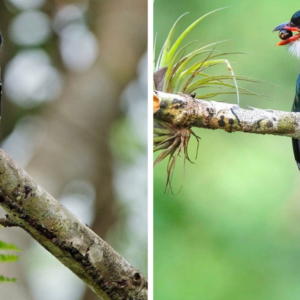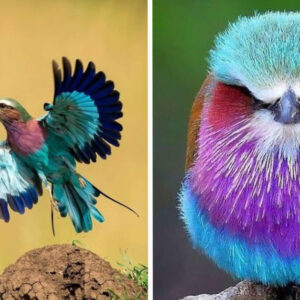The red-billed streamertail, also known as the doctor bird, scissor-tail or scissorstail hummingbird, is a unique species. The male has an iridescent emerald-green body plumage that appears slightly darker on the back. Its flight feathers on the sides are dark brown to black while the forked tail has long second outermost streamers, which are only second in length to those of the black-billed streamertail. When perched, the streamers cross over each other. The head is black with elongated lateral crown feathers and ear coverts extending beyond the nape of its neck.
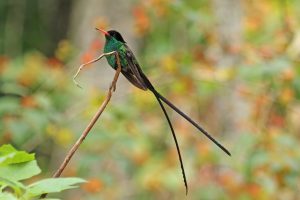
The female bird has a distinct appearance with a white throat, chest, and belly combined with green upperparts. Additionally, there are green spots on the sides of her breast. The tail of the female bird has central rectrices that are green while the rest are dark blue with broad white tips. Unlike male birds, the female lacks streamers and has a red bill. Juvenile males have a similar appearance to adult males but they lack streamers as well.
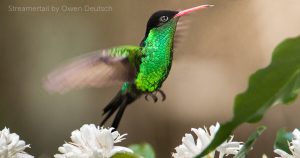
The Red-billed Streamertail can be found exclusively in Jamaica, except for in the far east of the country.

This type of hummingbird is known to frequent several habitats, particularly along the borders of mountainous forests. It can also be found in man-made areas like plantations, gardens, and parks. It is a prevalent species that can be spotted up to 1,000 meters in altitude and is also seen commonly along the coastline.
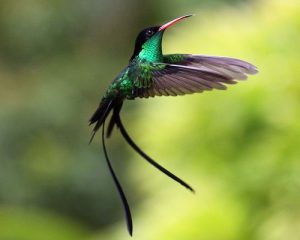
The Red-billed Streamertail, a bird known for being a mainstay in its habitat, feeds on nectar extracted from a variety of vibrant and scented small flowers found on various plant species. In search of nectar with a high sugar content, they use their long and extendable tongue that resembles a straw to reach the nectar while hovering with their tails pointing upwards. They have the ability to lick the nectar up to 13 times per second. Although they primarily consume nectar, they also eat insects when given the opportunity.
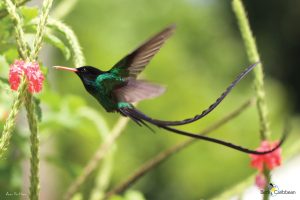
During breeding season, it is the female’s responsibility to construct a small cup-shaped nest made from plant fibers on a low and skinny branch situated between 1 to 3 meters above the ground. The nest is lined with soft material and strengthened using spider webs. She then lays up to two white eggs, which she incubates for approximately 17 to 19 days. Once the eggs hatch, she proceeds to feed the chicks until they are around 19-24 days old before leaving the nest, taken care of by the female for another three to four weeks. The male’s only role in the breeding process is mating.

Despite having a limited distribution, the Red-billed Streamertail bird species can be found throughout much of Jamaica and is considered to be of Least Concern on the IUCN list.
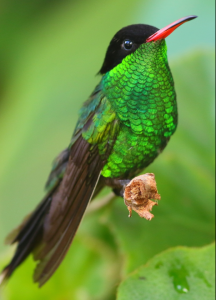
https://levanews.com

